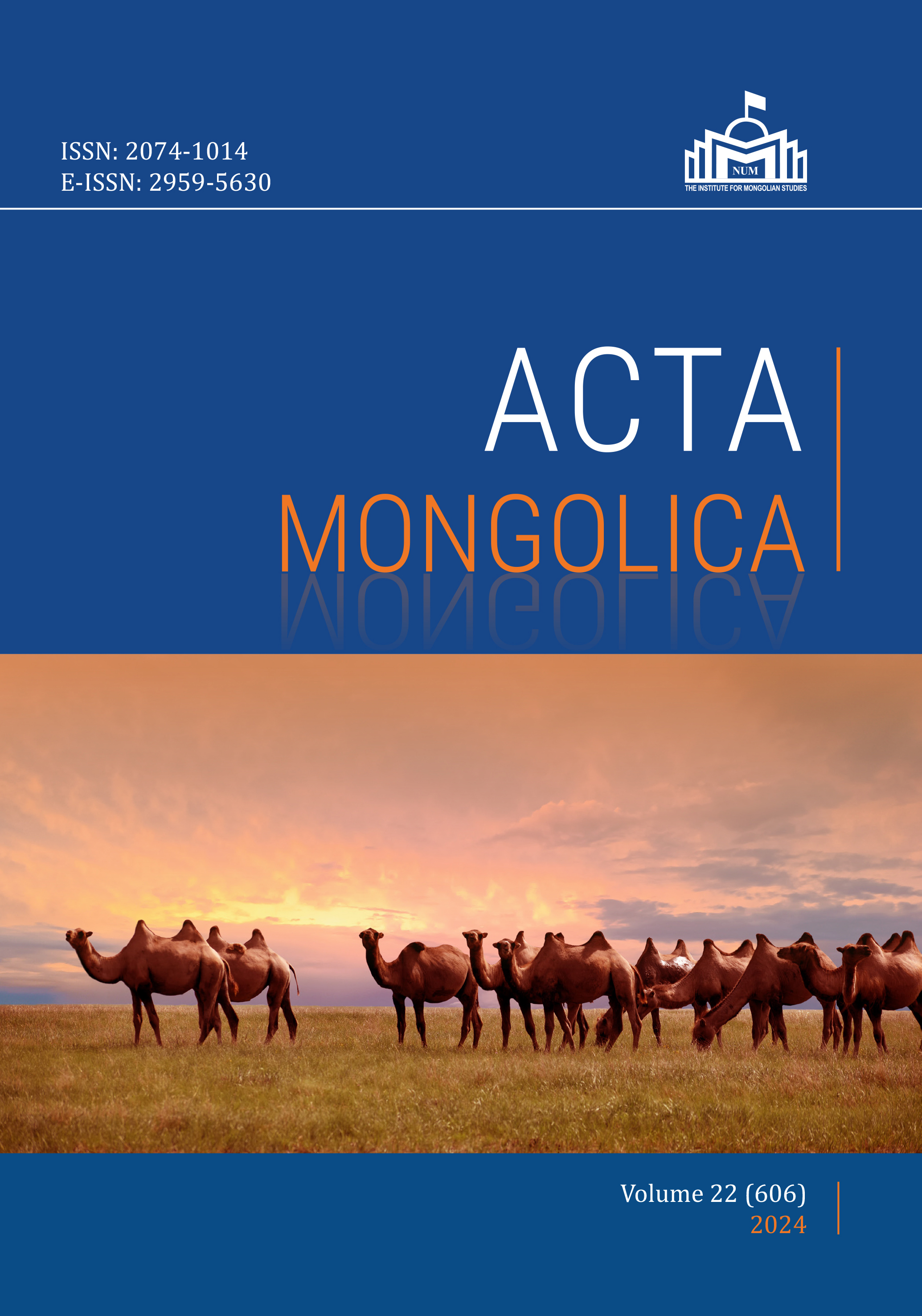A Theory of Coordinate Structure Formation and “Across-the-Board Movement”
Main Article Content
Abstract
Article Details

This work is licensed under a Creative Commons Attribution-ShareAlike 4.0 International License.
References
Abe, Jun and Chizuru Nakao (2009). On ATB-movement and parasitic gaps in Japanese. In Proceedings of the 11th Seoul International Conference on Generative Grammar, Sun-Woong Kim (ed.), 1-15. Seoul: Hankook.
Blümel, Andreas (2014). On forked chains in ATB-movement: Defending and newly implementing a traditional notion. Proceedings of ConSOLE 12: 19-38.
Bošković, Željko (2014). Now I’m a phase, now I’m not a phase: On the variability of phases with extraction and ellipsis. Linguistic Inquiry 45: 27-89.
Bošković, Željko (2019). On the limits of across-the-board movement. An unpublished manuscript, University of Connecticut, Storrs.
Bošković, Željko (2020). On the coordinate structure constraint, across-the-board- movement, phases, and labeling. In Recent Developments in Phase Theory, Jeroen van Craenenbroeck, Cora Pots and Tanja Temmerman (eds), 133-182. Berlin: Mouton de Gruyter.
Branan, Kenyon (2023). Locality and antilocality: The logic of conflicting requirements. Linguistic Inquiry 54: 1-38.
Chomsky, Noam (1995). The Minimalist Program. Cambridge, Massachusetts: MIT Press.
Chomsky, Noam (2000). Minimalist inquiries: The framework. In Step by Step: Essays on Minimalist Syntax in Honor of Howard Lasnik, Roger Martin, David Michaels and Juan Uriagereka (eds.), 89-155. Cambridge, Massachusetts: MIT Press.
Chomsky, Noam (2001). Derivation by phase. In Ken Hale: A Life in Language, Michael Kenstowics (ed.), 1-52. Cambridge, Massachusetts: MIT Press.
Chomsky, Noam (2004). Beyond explanatory adequacy. In Structures and Beyond: The Cartography of Syntactic Structures, Volume 3, Adriana Belletti (ed.), 104-131. Oxford: Oxford University Press.
Chomsky, Noam (2013). Problems of projection. Lingua 130: 33-49.
Chomsky, Noam (2021). Minimalism: Where are we now, and where can we hope to go? Gengo Kenkyu 160: 1-41.
Citko, Barbara (2005). On the nature of merge: External merger, internal merge, and parallel merge. Linguistic Inquiry 36: 475-496.
Citko, Barbara (2011a). Multidominance. In The Oxford Handbook of Linguistic Minimalism, Cedric Boeckx (ed.), 119-142. Oxford: Oxford University Press.
Citko, Barbara (2011b). Symmetry in Syntax: Merge, Move, and Labels. Cambridge: Cambridge University Press.
Davis, Colin P. (2021). Possessor extraction in Colloquial English: Evidence for successive cyclicity and cyclic linearization. Linguistic Inquiry 52: 291-332.
Hirata, Ichiro (2006). Coordination, subject raising, and AgrP in Japanese. Linguistic Inquiry 37: 318-329.
Hornstein, Norbert and Jairo Nunes (2002). On asymmetries between parasitic gap and across-the-board constructions. Syntax 5: 26-54.
Kato, Takaomi (2006). Symmetries in coordination. Doctoral dissertation, Harvard University, Cambridge, Massachusetts.
Kayne, Richard, S. (1994) The Antisymmetry of Syntax. Cambridge, Massachusetts: MIT Press.
Kishimoto, Hideki (2001). Binding of indeterminate pronouns and clause structure in Japanese. Linguistic Inquiry 32: 597-633.
Kishimoto, Hideki (2006). Japanese syntactic nominalization and VP-internal syntax. Lingua 116: 771-810.
Miyagawa, Shigeru (2001). The EPP, scrambling, and wh-in-situ. In Ken Hale, M. Kenstowics (ed.), 293-338, Cambridge, Massachusetts: MIT Press.
Miyagawa, Shigeru (2003). A-movement scrambling and options without optionality. In Word Order and Scrambling, Simin Karimi (ed.), 177-200, Oxford: Blackwell.
McCawley, James D. (1998). The Syntactic Phenomena of English (2nd Edition). Chicago: The University of Chicago Press.
McCloskey, James (2000). Quantifier float and wh-movement in an Irish English. Linguistic Inquiry 31: 57-84.
Nakao, Chizuru (2009). Island repair and non-repair by PF strategies. Doctoral Dissertation, University of Maryland, College Park, Maryland.
Nakao, Chizuru (2010). Japanese left node raising as ATB-scrambling. University of Pennsylvania Working Papers in Linguistics 16: 156-165.
Neeleman, Ad, Joy Philip, Misako Tanaka and Hans van de Koot (2023). Subordination and branching. Syntax 26: 41-84.
Nunes, Jairo (2001). Sideward movement. Linguistic Inquiry 32: 303-344.
Nunes, Jairo (2004). Linearization of Chains and Sideward Movement. Cambridge, Massachusetts: MIT Press.
Oda, Hiromune (2021). Decomposing and deducing the coordinate structure constraint. The Linguistic Review 38: 605-644.
Takano, Yuji (2010). Scrambling and control. Linguistic Inquiry 41: 83-110.
Ura, Hiroyuki (1996). Multiple feature-checking: A theory of grammatical function splitting. Doctoral Dissertation, Massachusetts Institute of Technology, Cambridge, Massachusetts.
Ura, Hiroyuki (1999). Checking theory and dative subject construction in Japanese and Korean. Journal of East Asian Linguistics 8: 223-254.
Ura, Hiroyuki (2000). Checking Theory and Grammatical Function in Universal Grammar. Oxford University Press: Oxford.
de Vries, Mark (2017). Across-the-board phenomena. In The Wiley Blackwell Companion to Syntax (Second Edition) Vol. I, Martin Everaert and Henk van. Riemsdijk (eds), 20-50. Oxford: Wiley Blackwell.
Williams, Edwin (1978). Across-the-board rule application. Linguistic Inquiry 9: 31-43.
Yamashita, Hideaki (2009). Shika-NPIs in Tokyo Japanese and the syntax-prosody Interface: Focus intonation prosody and prosody-scope correspondence. Japanese/Korean Linguistics 16: 437-451.
Zyman, Erik (2022). Phase-constrained obligatory late adjunction. Syntax 25: 84-121.

